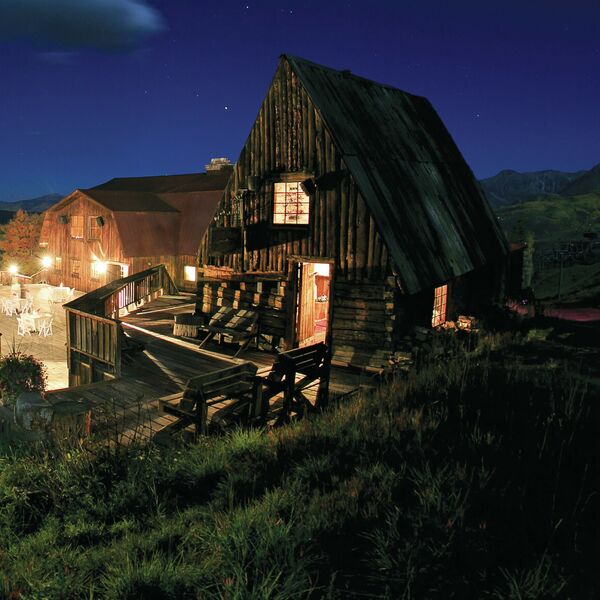How Telluride’s Rich Mining History Shapes the Mountain Town Culture Today
January 22, 2024A walk along the rustic streets of downtown Telluride is sure to instill an impression of a bygone era in any visitor. The town holds the spirit of its rugged, rough and tumble beginnings throughout the Historic District, which is a part of the National Register of Historic Places, and includes the majority of this small and stoic Colorado settlement. The snowcapped peaks of the San Juan Mountains surround the housing and buildings here, many of which have been around since the area was first established as a town in the late 1870s. These mountains are as beautiful as they are formidable, and they have stood like silent sentinels to keep a watchful eye on the valley below for millennia.
A blink of an eye in geological time has seen the area transform from a centuries-old summer refuge for the Ute Indians to a wild and western mining outpost in the late 1800s and early 1900s to the ski resort and world-renown destination that it is today. The evolution of the town of Telluride has been inspired and shaped by its rich history, and throughout time, it has kept true to the elements of nature and forces of fortune that still exist at the essence of mountain town culture today.
The Gold Rush of the 1800s fueled a fervent push of settlers, fortune seekers, and the infrastructure needed to sustain them all across the western expanses of the United States. Areas long thought of as inaccessible and other locations basically unknown to man were suddenly being explored and settled at a rapid pace in search of precious metals. Telluride was one such rugged and remote location that attracted a few brave souls willing to risk life and limb in search of the unknown. Spanish explorers first visited the area in the 1700s, looking for gold and other riches. Rumors ran wild that vast deposits were to be found in these titanic mountains, but the region proved too foreboding for these early adventurers to uncover much material wealth. They did leave their footprint on the area, with many ranges, peaks, and rivers still claiming Spanish names given by these explorers.
In 1875, a prospector named John Fallon made one of the first mining claims in the Telluride area, and others soon followed as the region proved to produce zinc, iron, lead, copper, silver, and gold. A rowdy mining camp was to become the roots of a mountain town, first named Columbia but then converted to Telluride in 1887. This newly established town was isolated and difficult to get to, but the potential riches awaiting those who made the difficult journey was enough incentive to steadily build a growing community. In 1890, the first railroad made its way to the region, and the town prospered greatly as the minerals pulled from the mountains were now able to be shipped easily across the country. The population during this time increased to over 5,000 residents as the railroad brought in people from all over the world to risk a chance at finding fortune. Telluride flourished during this time, and many of the buildings that still stand today are remnants of this early prosperity.
The mining boom turned into a bust quickly as World War I led to a crash in silver prices. Many of the mines could not keep up operations, and though the town remained, it was not thriving for much of the early to mid-20th century. Things changed again for this once rich town, and this time it was another natural resource fueling the boom: snow. The Telluride Ski Resort was established in 1972 and quickly created the new character and economy of what the town would become in the near future. Skiing revitalized the area and brought in new people, businesses, and opportunities, the likes of which had not been seen in almost 100 years. As the snow melted from the slopes, the success did not slow, with residents taking advantage of the town’s revived popularity by organizing music festivals and other summertime events that became annual traditions and are still going strong to this day.
Telluride has a rich and vibrant history that has spawned the character of what the town is today. The early days of establishment created a picturesque mountain community founded on the backs of those bold enough to venture into the heart of the Rockies and stake their claim. The sense of adventure, splendor, and fortune that attracted thousands during the Gold Rush remains as visitors from all over the world flock here at all times of the year to ski, hike, relax, and enjoy all that the area has to offer. The precious metals that lured the first settlers here now sit stuck in stone but are reflected in the silver light of snowy summits and the golden hues of aspen groves in the fall.


